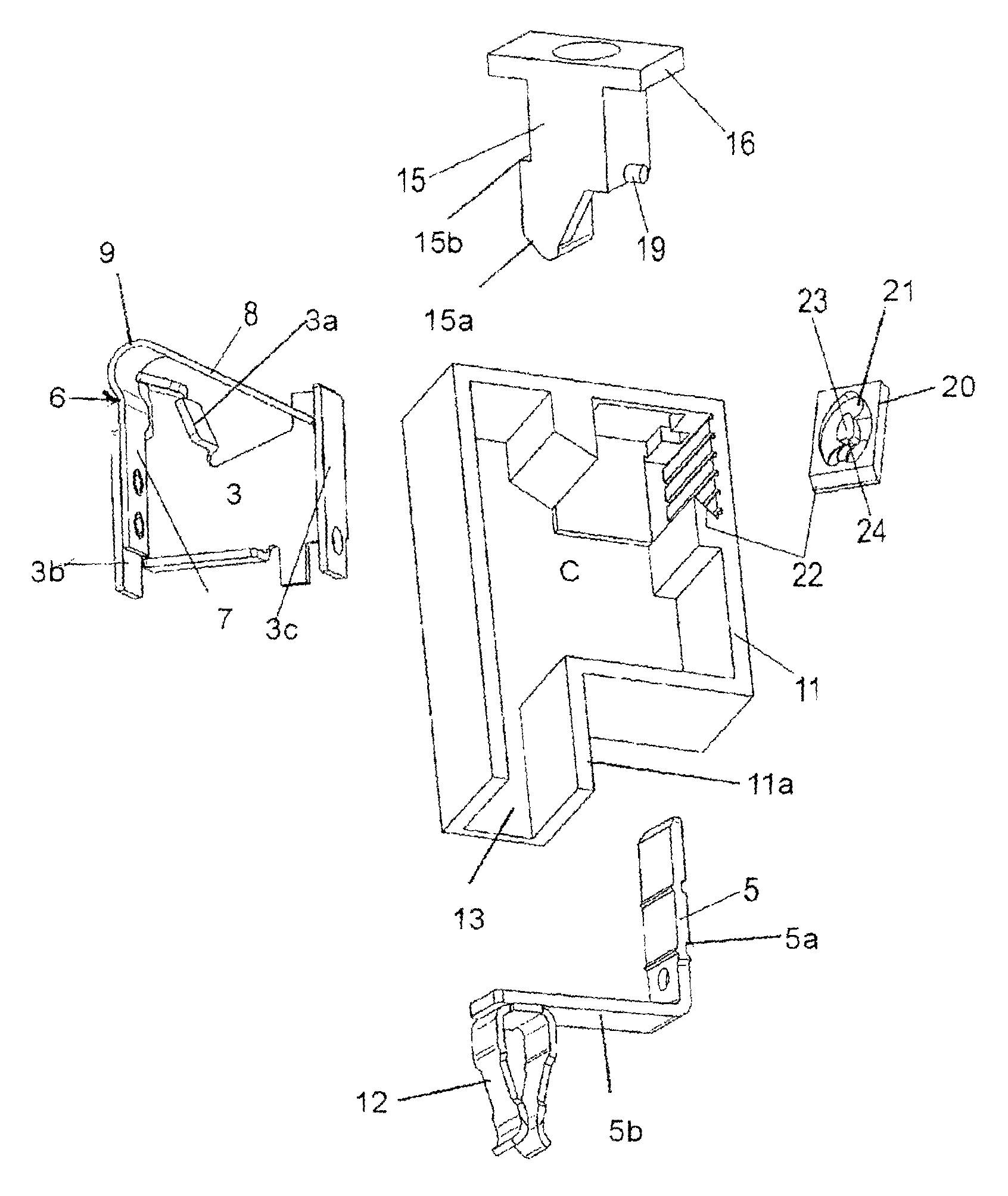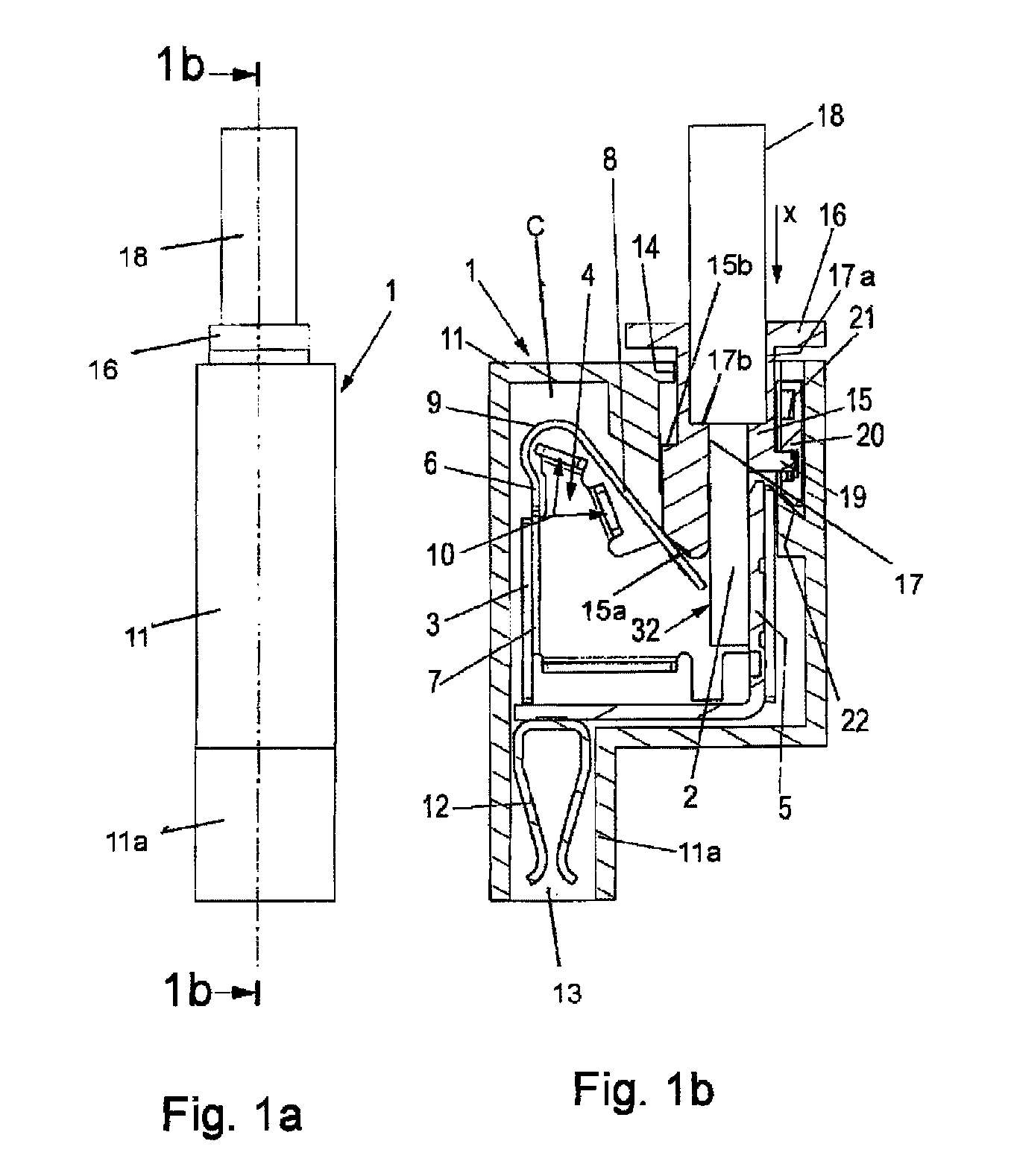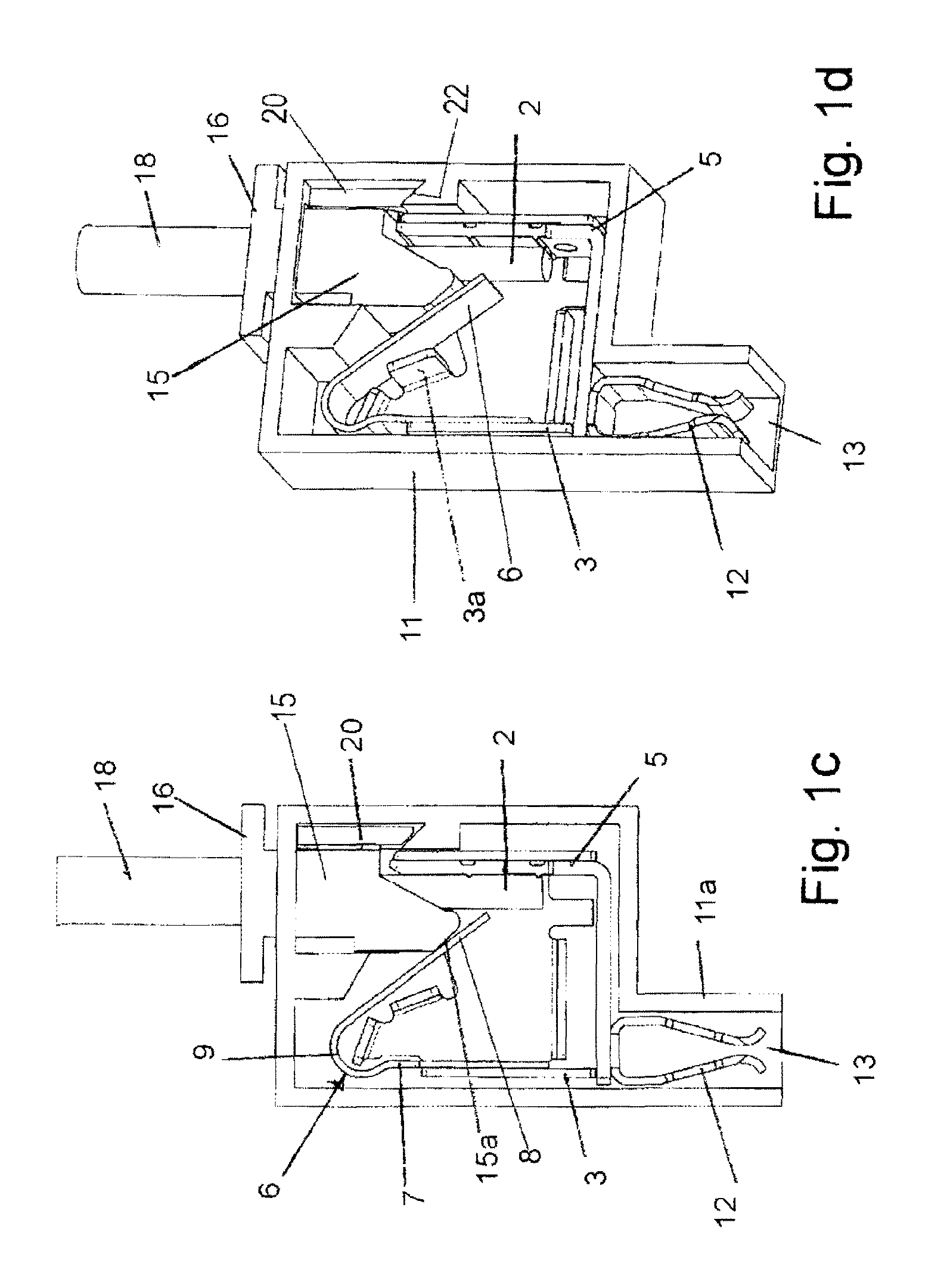Terminal for connecting lead ends
a technology of terminals and leads, applied in the direction of coupling device details, coupling device connections, contact members penetrating/cutting insulation/cable strands, etc., can solve the problem of difficult to achieve good handling of the actuating element in the known terminals
- Summary
- Abstract
- Description
- Claims
- Application Information
AI Technical Summary
Benefits of technology
Problems solved by technology
Method used
Image
Examples
Embodiment Construction
[0030]Referring first more particularly to FIGS. 1b and 5, the electrical connector 1 includes a rectangular housing 11 formed of electrically insulating synthetic plastic material and containing a chamber C. Mounted for vertical sliding displacement in an opening 14 contained in the housing top wall is an operating member 15 having a top flange portion 16, and an inclined bottom surface 15a. A projection 19 defining a cam follower extends rigidly from one side wall of the operating member, and a stop surface 15b is defined by an abutment on the opposite side wall. As shown in FIG. 1b, the operating member contains a vertical through bore 17 having at its upper end a counterbore 17a that defines a bottom wall 17b.
[0031]Mounted in the housing chamber C is a bent sheet metal cage 3 having a first orthogonally bent stop flange 3a, and a pair of orthogonally bent parallel support flanges 3b and 3c. Secured to cage support flange 3b is one leg 7 of an inverted V-shaped leaf spring 6. Th...
PUM
 Login to View More
Login to View More Abstract
Description
Claims
Application Information
 Login to View More
Login to View More - R&D
- Intellectual Property
- Life Sciences
- Materials
- Tech Scout
- Unparalleled Data Quality
- Higher Quality Content
- 60% Fewer Hallucinations
Browse by: Latest US Patents, China's latest patents, Technical Efficacy Thesaurus, Application Domain, Technology Topic, Popular Technical Reports.
© 2025 PatSnap. All rights reserved.Legal|Privacy policy|Modern Slavery Act Transparency Statement|Sitemap|About US| Contact US: help@patsnap.com



